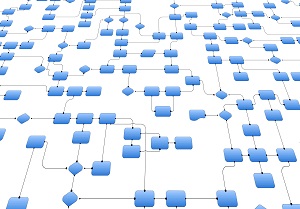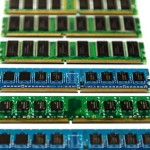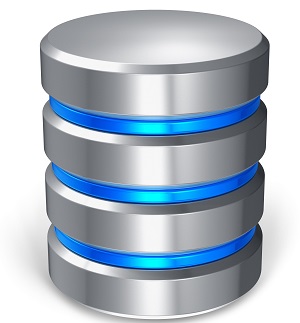27 May Machine Components for Intelligence
 If an abacus or a log and rope can be considered intelligent machines, then we can decompose their parts, possibly rearrange them, and get different kinds of intelligent machines. I know this is an extreme example of absurd reasoning. Let’s go from the opposite direction in the complexity spectrum. Can we use the human brain and its parts as a basis for defining the core components of “smart” systems? I think this is a valid approach, and this is why I began this blog with analysis of natural intelligence. I have described several levels of brain parts in my post, ranging from the various nervous systems (central, peripheral, autonomic) to brain cells and the components of components of neurons. I do not, by any means, advocate reconstruction the brain and its components. I prefer to look at capabilities and outcomes, and link these to specific neural components as a basis of building cybernetic components that can produce similar outcomes.
If an abacus or a log and rope can be considered intelligent machines, then we can decompose their parts, possibly rearrange them, and get different kinds of intelligent machines. I know this is an extreme example of absurd reasoning. Let’s go from the opposite direction in the complexity spectrum. Can we use the human brain and its parts as a basis for defining the core components of “smart” systems? I think this is a valid approach, and this is why I began this blog with analysis of natural intelligence. I have described several levels of brain parts in my post, ranging from the various nervous systems (central, peripheral, autonomic) to brain cells and the components of components of neurons. I do not, by any means, advocate reconstruction the brain and its components. I prefer to look at capabilities and outcomes, and link these to specific neural components as a basis of building cybernetic components that can produce similar outcomes.
| Understanding Context Cross-Reference |
|---|
| Click on these Links to other posts and glossary/bibliography references |
|
|
|
| Prior Post | Next Post |
| AI Domains and Approaches | Data and Modeling |
Definitions |
References |
| brain intelligence | Curtis 1990 Kuffler 1984 |
| cybernetics computer | Bailey 1996 Anderson 1988 |
| object- oriented programming (OOP) | Roshen 2009 |
Component Recap
Here is a list of possible “Components of Intelligent Systems and Their Characteristics.”
| 1 | Processing mechanism (Capable of interpretation- response generation- creativity- problem solving- introspection- and other complex processes) |
| 2 | Input and output channels (Capable of processing multi-source/media input and output) |
| 3 | Short-term data storage (Capable of storing large quantities of new information) |
| 4 | Long-term data storage (Capable of overcoming damage/loss of parts of memory with minimal degradation) |
| 5 | Rules engine to implement the adaptable logic propositions and interpret them to support processes |
| 6 | Learning mechanism (Capable of integrating new information and altering long-term storage) |
| 7 | Links between processing elements (Permitting the parallel processing of multiple inputs and parallel generation of multiple outputs) |
| 8 | Association mechanism (Capable of establishing logical links between new information and known information and new links between elements of known information) |
This is not necessarily an exhaustive list of components. No mention is made of security nor logic management, which will both be key components of commercializable systems.
 Processing Mechanisms
Processing Mechanisms
The many ways to process information in computers all come back to one thing: branching based on a binary 1 or 0. The methods for deciding whether or not to branch can be eloquent as well as arbitrarily complex. When we engineer computational processes, we use rectangles to describe steps, diamonds to describe decisions that lead to one branch or another (or many possibilities), and other symbols to represent input, output, stored data and other process elements. Each element is labeled in a meaningful way so experts can validate that the process is correct, and developers can implement it in a system. The illustration at right shows a process flow diagram without the elements labeled.
Here are definitions of some of the processing mechanisms I will be discussing in posts in this section:
| Real Time | Programs that process live data as it arrives through human operator input or mechanical data collection or generation. |
| Batch | Programs that accumulate information such as transactions; and forward the transactions to a central batch processor in groups. |
| Databases | Programs built with structure and functions required to store and process large amounts of similar data in a defined way. |
| Knowledge Networks | Ontologies and other networks that use advanced processing techniques to perform more complex tasks than ordinary databases. |
| Expert systems | Rule-based and knowledge-based systems that perform tasks typically performed by human experts. |
| Neural networks | Brain-like arrays of weighted processing elements that process information by spreading activation. |
In upcoming posts in this section, I will examine the more complex of the processing mechanisms named above, including posts about neural networks. In Section 8, expert systems and intelligent databases will be discussed.
Conspicuously absent from the list at right is mention of object- oriented programming (OOP) techniques, omitted because these techniques can be applied to any of the mechanisms listed here. Section 9 describes how OOP techniques can be applied to develop smarter systems.
 Memory
Memory
Random access memory in a computer (shown at right) is like short-term memory in a human:
- it is organized with many wires like the connections between neurons; and
- things you remember can be easily forgotten when replaced with new information.
Our primary concern in building a model of human memory is with long-term memory, often referred to as knowledge.
 Information Storage
Information Storage
Data-storage mechanisms for short and long-term retention of data are essential components of our model. You probably noticed that this section is headed “Information Storage” instead of “Data Storage.” The difference between data and information is that data is raw and information is interconnected or preprocessed. An example of raw data is 42: 42 may be your dog’s age in people years, or it may be the meaning of life. If it is stored in a data file without any explanation, it is raw data.
When data is stored in a meaningful way that could help you understand its intent, it becomes information. For example, you might have a database storing the following information:
“County: Washington:” “Male Wage Earners Average Age: 42”
By associating multiple data elements, such as location, gender, employment category and age, the number 42 takes on meaning and can be correlated with other facts as a basis of complex analysis and further action.
The next step beyond information storage concerns what we humans do in our brains: knowledge storage. How does information become knowledge? Only by being linked to other related information in the same context or domain and by knowing what to do with itself does information become knowledge.
The silver and blue illustration of a hard disk drive is like human long-term memory in that it retains the information semi-permanently. Now that I’ve outlined some systems capabilities at a very high level, I will prepare some material that goes into greater depth so we can start to formulate good models for brain-like processes.
| Click below to look in each Understanding Context section |
|---|








